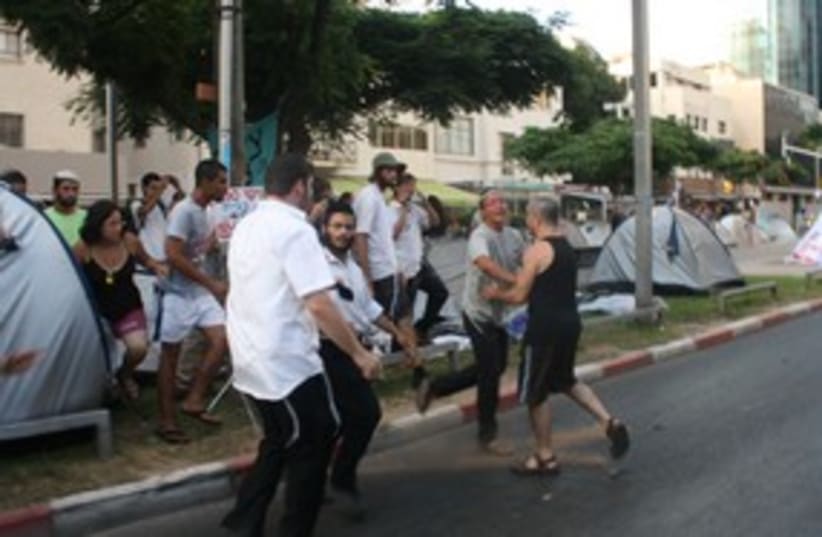Defense Ministry approves new construction in ArielIn theory, of course, it makes perfect sense. Israel devotes a much higher share of its budget to defense than other Western countries do; peace would obviate the need for much of this spending, thereby indeed freeing up funds for other purposes. Hence when the Oslo Accords were signed in 1993, its proponents confidently expected a “peace dividend” to follow. Instead, annual defense spending has risen by about NIS 10 billion over the last 18 years, since every new territorial withdrawal merely produced new threats. In 2009, according to Central Bureau of Statistics data, defense spending was 25% higher than it was in 1995, in constant shekels.Last year’s official defense budget totaled NIS 55.4 billion, or about 17% of the total budget, while actual defense spending totaled NIS 60.9 billion (according to the Bank of Israel, defense spending has exceeded the official budget in each of the last six years). By contrast, most OECD countries devote no more than 6% of their budget to defense. This year, the defense budget is once again slated to total about NIS 55 billion, so even if no supplementary funds materialize, defense will once again be the largest single item in the budget. For the last few years, it has surpassed even debt servicing, which occupied the number-one slot for decades.Nor is this surprising: The territorial withdrawals of the last 18 years produced unprecedented terrorism. This not only precluded cuts in defense spending, but necessitated additional spending to counter it.Some of this extra spending has gone to new technologies. The deadly suicide bombings of the second intifada, for instance, forced Israel to build the security fence, which has thus far cost more than $2.1 billion (NIS 7.45 billion at current exchange rates), and still isn’t finished. The surge in rocket fire from both post-withdrawal Gaza and post-withdrawal Lebanon forced development of the Iron Dome rocket interception system; aside from billions of shekels in development costs, each Iron Dome system costs $15 million (NIS 53 million) for the battery plus $40,000 (NIS 142,000) per missile. During the Second Lebanon War of 2006, Hezbollah fired some 4,000 missiles at Israel; intercepting them all with Iron Dome (had it been available) would thus have cost about NIS 568 million for the interception missiles alone.Far more expensive, however, are major military operations, of which Israel has conducted three in the last decade in response to escalating terror from territories it quit: Operation Defensive Shield in 2002, to combat the wave of suicide bombings from portions of the West Bank ceded to the Palestinians under Oslo; the Second Lebanon War, in response to cross-border terror from southern Lebanon, which Israel left in 2000; and Operation Cast Lead in late 2008, to combat escalated rocket fire from Gaza, which Israel quit in 2005.For starters, such operations always involve mobilizing the reserves, and while conscripts receive about NIS 600 a month for combat service, reservists are paid their full civilian salary. Hence calling up 60,000 reservists, as Israel did in the Second Lebanon War, would cost the state NIS 246 million a month even if all earned only the minimum wage, and NIS 507 million a month at the average wage – not counting the cost to the economy of their absence from their regular jobs.More significantly, however, major military operations always involve massive quantities of ammunition, air force flying time, etc. Hence the 2006 war in Lebanon cost an estimated NIS 11 billion, while the war in Gaza in early 2009 cost an estimated NIS 5 billion.Then there’s the fact that the government picks up the tab for all damage caused by hostile enemy action, aka suicide bombings and rocket fire. For the Lebanon war, for instance, the bill for was expected to total some $335.4 million (about NIS 1.2 billion). And the bill for long-term medical and psychological treatment for the injured, along with financial assistance to the families of those killed, is often much higher. In the second intifada, for instance, almost 1,100 Israelis were killed and almost 7,500 wounded; the latter figure includes many who were seriously injured, and thus incurred major medical expenses.All these extra government outlays to counter post-withdrawal terror obviously mean less money for the kind of social spending the tent protesters seek. But perhaps even more significant is the general cost to the economy of this terror. The second intifada, for instance, caused a two-year recession (2001-2002) and three years of over 10% unemployment; needless to say, recession and high unemployment make it far harder to achieve the comfortable standard of living the protesters seek.Granted, real peace would reduce defense spending. But so far, every Israeli effort to end “the occupation” has produced not peace, but increased terror: Palestinians killed more Israelis in the first two and a half years after Oslo than in the entire preceding decade, while the first four years of the second intifada produced more Israeli casualties than the entire preceding 53 years. The Israeli casualty rate began to fall again – by about 50% a year – only after Israel reoccupied the West Bank in Operation Defensive Shield. And there’s no indication that quitting the West Bank a second time would result in anything but a repeat of the surging terror every other withdrawal of the last 18 years has produced, given that 66% of Palestinians still see statehood as a mere stepping-stone to the ultimate goal of Israel’s eradication.Fortunately, most Israelis understand this quite well. And that’s precisely why protest leaders have so far not acceded to the Left’s plea to add “ending the occupation” to their list of demands: They realize it would cause their enormous popular support to evaporate overnight.
The writer is a journalist and commentator.
